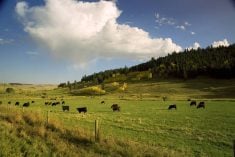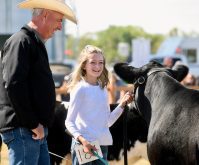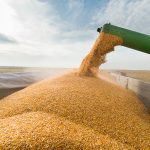I am pleased to see the world is starting to open and return somewhat to pre-pandemic life. For the first time in a long time, those able to travel had the opportunity to get together in person at the Canadian Cattlemen’s Association (CCA) semi-annual meeting held in Calgary in August to discuss industry issues and plan CCA advocacy efforts.
Our efforts around resilience are paying off. Most foodservice businesses are now open and there is a compelling case to keep them open. Labour is now their biggest challenge. The massive and ongoing investments our processors have made are keeping our plants operating at near 100 per cent capacity.
Read Also

The Canadian Cattle Association’s international advocacy efforts
Global ag policies affect Canadian food policy, so the Canadian Cattle Association participates in international and domestic forums
We heard more good news at the National Cattlemen’s Beef Association (NCBA) convention in August. CattleFax gave one of the most positive outlooks for cattle prices over the next three years that we have seen in a long time. We heard beef demand is at the highest level in 33 years in the U.S. and the increase in beef sales between just 2019 and 2020 was four times greater than total sales of plant-based alternatives. Export sales for both Canada and the U.S. are up double digits supported by very strong international demand. If Mother Nature co-operates, we could see beef being one of the leading growth industries coming out of the pandemic lockdowns.
We are also now learning about the full impact of this summer’s drought. On Sunday, August 22, 2021, with only a few hours before the federal election was called, the beef industry received good news about the AgriRecovery program, as the Government of Canada increased total funding to up to $500 million to address extraordinary costs faced by producers due to drought and wildfires. This includes initial funding of $100 million announced on August 6, 2021. Using the 60-40 cost-shared basis, as outlined under the Canadian Agricultural Partnership, the federal share would be up to $482.5 million, not including British Columbia’s planned program.
Here is a summary of what this means for producers in drought-stricken areas:
In B.C., the government announced that the provincial and federal governments are working on an AgriRecovery program to help deal with drought and wildfire challenges producers are facing. At the time of writing, total funds have not been announced, but the program details are anticipated to be similar to the AgriRecovery Wildfire initiative in 2017-18.
Alberta earmarked $136 million in provincial funding. The federal contribution is an additional $204 million under AgriRecovery for total funds of $340 million. The 2021 Canada-Alberta Livestock Feed Assistance Initiative will provide eligible producers an initial $94 per head payment for breeding females based on inventory as of August 6. Later this year, producers may receive an additional payment up to a maximum of $106 per head, through a receipt-based approach, to reflect extraordinary circumstances faced in some areas of the province. At the time of writing, details of the second payment were still being finalized.
In Saskatchewan, the province announced $119 million in funding. The federal government will provide an additional $178 million for a total program of $297 million. The 2021 Canada-Saskatchewan Drought Response Initiative will provide eligible producers with a $200 per head payment to help maintain breeding females, with an initial $100 payment on inventory as of August 1 and the next $100 payment based on inventory on December 31.
Manitoba allocated $62 million in provincial funding. The federal government is expected to add up to $93 million for a total of $155 million in program funding. The Livestock Feed and Transportation Drought Assistance program will help producers purchase and test feed for livestock to maintain their breeding herds including transporting purchased feed from distant locations. The Livestock Transportation Drought Assistance program will help offset freight expenses associated with moving livestock to alternative feed supply areas. Manitoba is also designing a cow herd rebuilding program under the Canada-Manitoba AgriRecovery Drought Assistance framework. It will help livestock producers who were forced to sell breeding stock due to limited feedstock in 2021 to rebuild their herds starting in 2022. At the time of writing, program details were under development.
Heading east, Ontario announced up to $5 million in provincial funding. The federal contribution is expected to add an additional $7.5 million for a total program of $12.5 million. The program is expected to cover costs for purchasing feeds, transportation of feed and water, transportation of animals to feed, temporary fencing and other extraordinary costs related to the drought. These costs are estimated at approximately $200 per head for cattle.
As we look ahead, one of the Canadian beef industry’s primary modern objectives is sharing the positive story of agriculture with consumers, government and other stakeholders. CCA is tackling this head-on through the United Nations Food Systems Summit (UNFSS). While the summit itself takes place in September during the UN General Assembly, CCA staff have been working tirelessly since the spring to make sure the voice of Canadian beef producers is heard at this international table.
With the work from the dialogues, along with representation for the industry by Canadian ministers, at the pre-summit, we have seen a significant shift in attitudes toward animal agriculture. The conversation has moved from phasing out animal agriculture to working on developing nature-based solutions to continue to improve our contributions to global food systems and environmental stewardship. Throughout the lead-up to the summit, CCA has been a leader for both other commodities and other countries, as we called upon other animal agriculture sectors from around the world to join forces in telling our positive story. This co-ordinated effort is paying off.
















